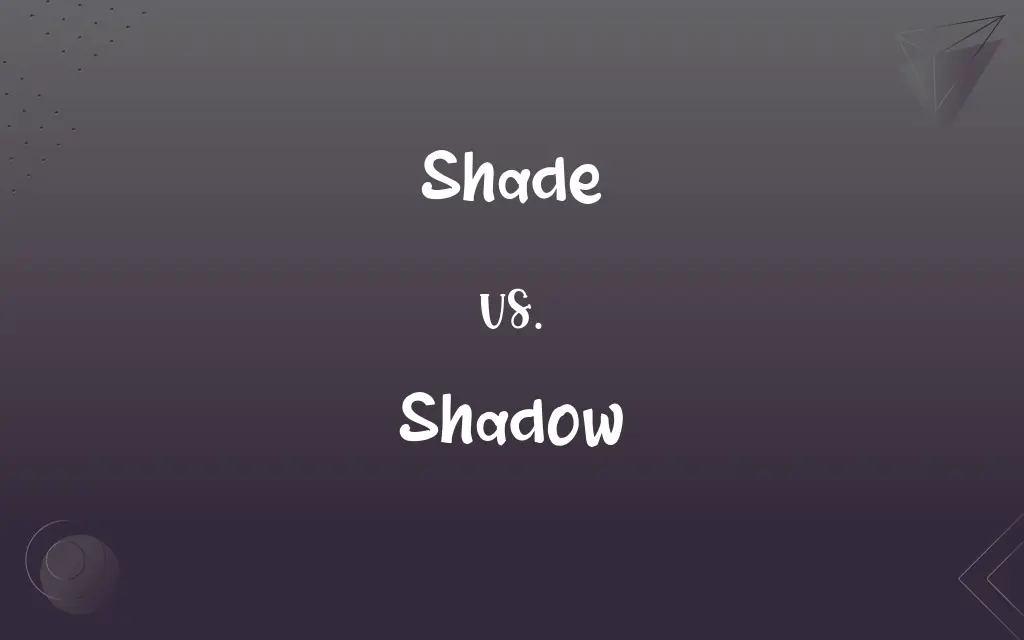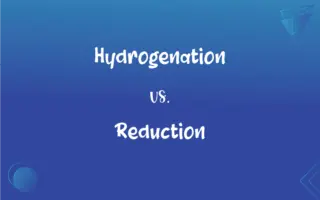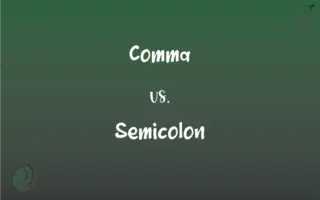Shade vs. Shadow: What's the Difference?
Edited by Aimie Carlson || By Janet White || Published on December 28, 2023
Shade refers to area blocked from direct light, often cooler. Shadow refers to silhouette cast by an object blocking light.

Key Differences
Shade refers to the area where direct sunlight or light is obstructed, providing a cooler space, often used for comfort or protection from the sun. Shadow, on the other hand, is the specific silhouette or outline cast by an object, person, or structure when it blocks light, creating a dark shape on the surface opposite the light source.
In shade, the emphasis is on the created space that is less bright than its surroundings, often sought for relief from heat or brightness. Shadow focuses on the dark shape that results from an object blocking the light, highlighting the form and outline of the object causing it.
Shade can be a larger, more diffused area where light is not directly reaching, while a shadow is usually more defined and closely linked to the shape of the object creating it. Shade is often associated with comfort and shelter, whereas shadow can be associated with the artistic and visual aspects of light and shape.
Shade is a concept often used in discussions about weather, outdoor comfort, and protection from sun, encompassing a broader, less defined area. Shadow is more specific and can be used in various contexts, including art, science, and psychology, representing the exact shape of the absence of light.
The experience of shade is typically about the sensation of being in a cooler, less bright area, a respite from direct light. Shadow, in contrast, can be an artistic or symbolic representation, conveying mood, time of day, or the presence of something or someone blocking light.
ADVERTISEMENT
Comparison Chart
Definition
Area blocked from direct light
Silhouette cast by an object
Association
Comfort, coolness, protection from sun
Shape, form, artistic representation
Contextual Usage
Weather, outdoor comfort
Art, science, symbolism
Visual Characteristics
Broad, diffused area
Defined, closely linked to object shape
Emotional/Symbolic Aspect
Relief, respite
Mood, presence, time indication
ADVERTISEMENT
Shade and Shadow Definitions
Shade
To cover or protect from light and heat.
The awning shaded the patio from the afternoon sun.
Shadow
An inseparable follower or companion.
He was like a shadow, always following her.
Shade
A slight variation in color.
She chose a lighter shade of blue for the walls.
Shadow
A hint or faint, unobtrusive presence.
There was a shadow of sadness in his eyes.
Shade
A subtle distinction.
His opinion had shades of both agreement and doubt.
Shadow
A reflection or symbol of something.
The ruins were a shadow of the city's former glory.
Shade
To represent with varying degrees of light and dark.
The artist shaded the drawing to create depth.
Shadow
A dark figure or image cast on a surface.
The tree's shadow stretched across the lawn.
Shade
A place sheltered from direct light.
We sat in the shade of the tree to escape the sun.
Shadow
To follow and observe closely.
The detective shadowed the suspect throughout the city.
Shade
Light diminished in intensity as a result of the interception of the rays; partial darkness.
Shadow
A dark area or shape made by an object blocking rays of light.
Shade
Cover or shelter provided by interception by an object of the sun or its rays
Sat in the shade under the tree.
Shadow
The darkness or diminished light caused by the blocking of a light source
The back yard is in shadow all day long.
FAQs
Do all objects cast shadows?
Any opaque object that blocks light will cast a shadow.
What creates shade?
Shade is created when an object blocks direct light, creating an area of less brightness.
Can shade be used for artistic purposes?
Yes, shade is often used in art and design for its visual and cooling effects.
Is shade the same as darkness?
No, shade is just a reduction in brightness, while darkness is the absence of light.
Is shade always cooler than sunlight?
Generally, yes, because it blocks direct sunlight which is a source of heat.
Can a shadow exist without light?
No, a shadow is formed when light is blocked by an object.
Do shadows change throughout the day?
Yes, shadows change in length and position with the sun's movement.
Are shadows always black?
No, the color of shadows can vary depending on the light source and surrounding colors.
Do shadows only form on the ground?
No, shadows can form on any surface where light is blocked.
Is shade a fixed area?
No, the area of shade changes with the light source's position.
Can shade provide UV protection?
Yes, shade can offer protection from harmful UV rays.
Is the shade always cold?
Not always, it's cooler than direct sunlight but not necessarily cold.
Can shadows be misleading in size?
Yes, depending on the light's angle, shadows can appear larger or smaller than the object.
Can two objects create the same shade?
No, each object's shape and size create a unique shade pattern.
Can shade exist indoors?
Yes, shade can be created anywhere light is obstructed.
Does the color of an object affect its shade?
No, shade is related to light obstruction, not color.
Do shadows have a specific shape?
Shadows mimic the shape of the object blocking the light.
Can shadows be used to tell time?
Yes, sundials use shadows to indicate time.
Are shadows used in psychological symbolism?
Yes, shadows are often used symbolically in psychology and literature.
Can shadows interact with other shadows?
Yes, shadows can overlap and interact, creating complex patterns.
About Author
Written by
Janet WhiteJanet White has been an esteemed writer and blogger for Difference Wiki. Holding a Master's degree in Science and Medical Journalism from the prestigious Boston University, she has consistently demonstrated her expertise and passion for her field. When she's not immersed in her work, Janet relishes her time exercising, delving into a good book, and cherishing moments with friends and family.
Edited by
Aimie CarlsonAimie Carlson, holding a master's degree in English literature, is a fervent English language enthusiast. She lends her writing talents to Difference Wiki, a prominent website that specializes in comparisons, offering readers insightful analyses that both captivate and inform.






































































